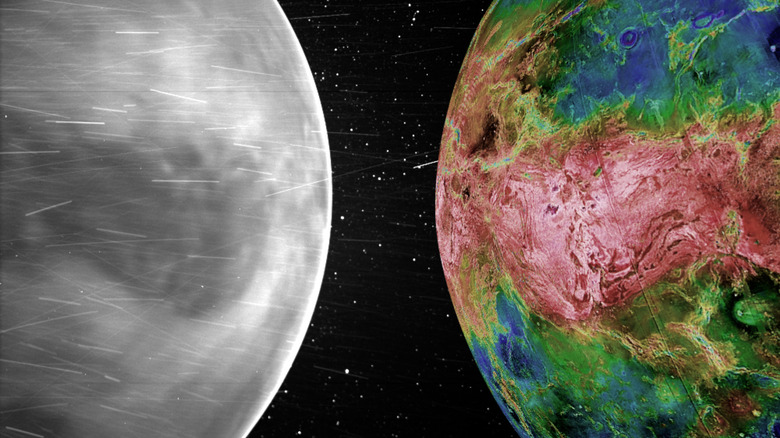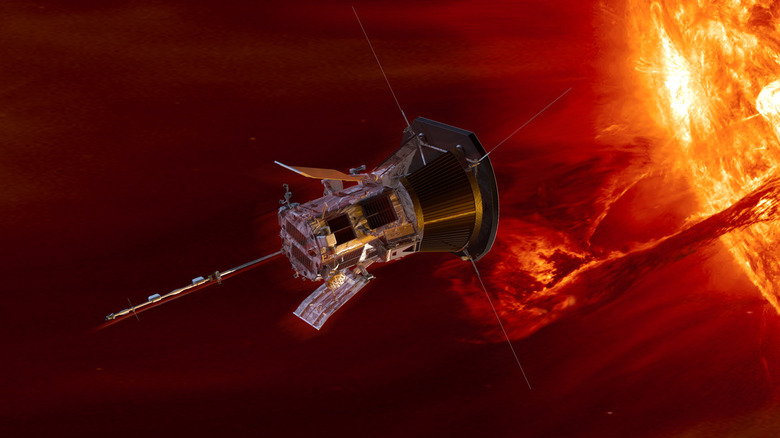Parker Solar Probe Captures Cool Image Of Venus
In 2018, NASA launched the Parker Solar Probe mission to study the sun. To get close enough to the celestial body to study it in detail, the spacecraft has to perform a series of swing-bys of Venus, using the planet's gravity to adjust its course and bring it closer to the sun. That means the probe is making close passes of Venus as it changes its trajectory, and when it does so, scientists have the opportunity to pick up some bonus science data on our planetary neighbor.
On a recent flyby, the Parker Solar Probe captured a rare image of the Venusian surface. Venus has a thick atmosphere full of clouds of sulfuric acid, and these typically obscure the planet's surface from view. But Parker was able to use one of its instruments, the Wide-Field Imager (WISPR), to look at the planet in both the visible light and near-infrared wavelengths. The tool imaged Venus' nightside, or the part of the planet facing away from the sun, and was able to see features on its surface like plains and plateaus, as well as the glow of oxygen in its atmosphere.
"Venus is the third brightest thing in the sky, but until recently we have not had much information on what the surface looked like because our view of it is blocked by a thick atmosphere," said the study's lead author Brian Wood, a physicist at the Naval Research Laboratory in Washington, DC. "Now, we finally are seeing the surface in visible wavelengths for the first time from space."
A bonus Venus surprise
WISPR was used to snap images of Venus for the first time in July 2020 when Parker made its third flyby. Scientists thought they might be able to see some of the planet's clouds as they passed, but were delighted to learn they could also see its surface. The WISPR instrument was designed for taking images of the sun's corona, so discovering it could also image Venus was a big bonus. It was possible to see features on the gas giant's surface using near-infrared because the planet is so hot it gives off infrared radiation.
"The surface of Venus, even on the nightside, is about 860 degrees," Wood said. "It's so hot that the rocky surface of Venus is visibly glowing, like a piece of iron pulled from a forge."
The images captured by Parker can help researchers understand Venusian geology and make-up as well as the planet's surface features because different materials glow at different wavelengths when they get hot.
This can help us understand the planet's evolution and how it diverged from Earth, which is a major topic in planetary science. Earth and Venus are similar in size and formed around the same time, but today the two destinations are vastly different. Upcoming missions to Venus like NASA's DAVINCI+ and VERITAS, or the European Space Agency's EnVision, will help us learn more about how Earth and Venus evolved so differently.

